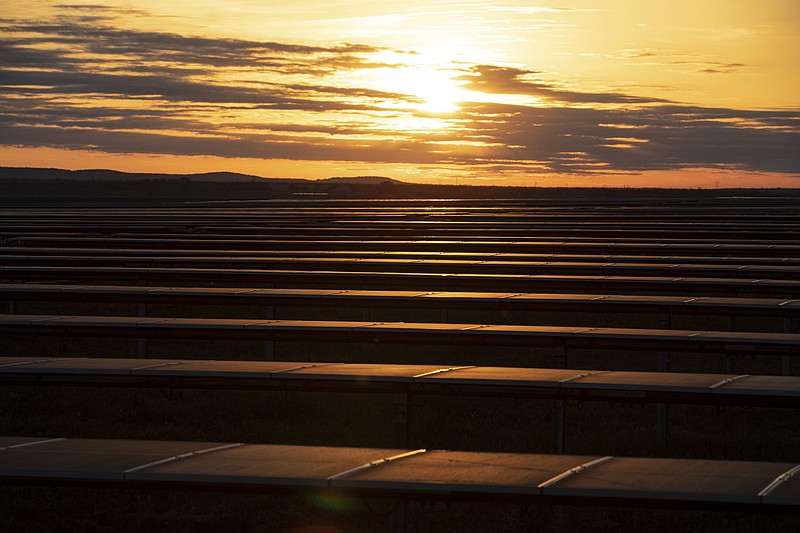When the sky darkens during next month’s solar eclipse, electricity production in some parts of the country will drop so sharply that it could theoretically leave tens of millions of homes in the dark. In practice, hardly anyone will notice a sudden loss of energy.
Electric utilities say they expect to see significant decreases in solar power production during the eclipse but have already lined up alternate sources of electricity, including large battery installations and natural gas power plants. Homeowners who rely on rooftop solar panels should also experience no loss of electricity because home batteries or the electric grid will kick in automatically as needed.
At 12:10 p.m. April 8, the solar eclipse will begin over southwestern Texas, the regional electrical system perhaps most affected by the event, and last three hours.
“I don’t think anything is as predictable as an eclipse,” said Pedro Pizarro, president and CEO of Edison International, a California power company, and chair of the Edison Electric Institute, a utility trade organization. “You can prepare.”
This year’s solar eclipse will darken the sky as it passes over a swath of Mexico, the United States and Canada. That leaves solar energy systems — one of the nation’s fastest-growing sources of electricity — vulnerable.
Although solar power produces only when the sun shines, forecasters can generally predict pretty well how much electricity panels will produce on any given day depending on the weather. That helps utility and grid managers make sure they have other sources of energy available to meet consumer needs.
Solar power accounted for nearly 6% of the electricity generated in the United States last year, up from less than 1% a decade earlier. Much of that energy was produced during the middle of the day, during the very hours that the eclipse will pass over the United States. Ramping up other temporary resources like power plants that typically run on natural gas can raise costs and increase greenhouse gas emissions, but energy experts said doing so for an eclipse will have minimal economic and environmental impact.
Electric grid managers regularly handle fluctuations in the supply of power because of bad weather and other events. They will be aided during this event by the timing of the eclipse, avoiding periods of high demand before people go to work and after they return home in the evening when electricity use generally peaks.
“There should be no disruption for customers if regulators plan appropriately,” said Abigail Ross Hopper, president and CEO of the Solar Energy Industries Association. “For Americans with solar on their home, it won’t be any different than a passing thunderstorm.”
One of the primary regulatory agencies that could be affected by the eclipse, the Electric Reliability Council of Texas, said it is prepared.
The council, which manages Texas’ grid, has been under scrutiny over the last few years following a collapse of the state’s electricity system during a winter storm and freeze in 2021. It has had to ask homeowners and businesses to reduce their electricity use during winter freezes and summer heat waves in recent years to avoid rolling blackouts.
A solar eclipse in October 2023 caused a dramatic drop in solar power production, forcing grid mangers to direct natural gas plants to ramp up production. That event prompted increased planning for the upcoming eclipse.
The Texas grid operator said it expected the April eclipse to reduce solar energy generation to “about 7.6% of its maximum clear sky output.”
It said it was “working on forecasting models to reflect reduced solar power production and does not expect any grid reliability concerns during the eclipse.”
Solar power has provided an increasingly large proportion of Texas’ electricity, according to the federal Energy Information Administration. More than a third of the solar additions in the United States this year are expected in the state — the most of any state — raising concern about the need for backup systems like batteries to ensure reliability of the grid during solar eclipses and extreme weather events.
The variable nature of solar power is increasingly one of the reasons consumers have been encouraged to add batteries to their rooftop solar systems. Solar homes that have batteries will see the least impact from the solar eclipse.
The eclipse “will have some very small impact,” said Mary Powell, CEO of Sunrun, the nation’s largest residential solar company.
This article originally appeared in The New York Times.
